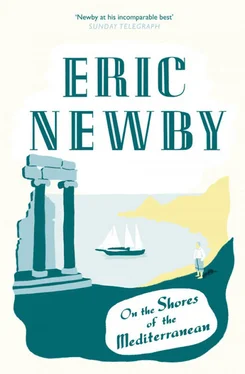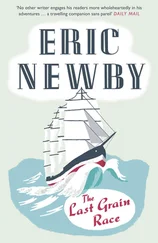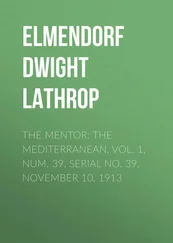‘He who revenges himself is blessed,’ was one of the dicta of family life in a country where male children used to have loaded firearms placed in their hands before they could even stand on their two feet, let alone fire them, in order to prepare them to be good Montenegrins, worthy members of the only Balkan State that was never subdued by the Turks. For Montenegro, until the Second World War, was a man’s country in which a woman’s lot was to perform menial tasks such as agriculture, beget as many male children as possible to make up for the constant death roll among the men, and attend the funerals of their lords and masters when they failed to survive a ceta , one of the predatory raids they spent so much of their time either planning or taking part in. The results of such expeditions were subsequently recorded for posterity by guslari , minstrels, many of them blind, who used to accompany their recitals of these bloody doings on the guslar , a one-stringed instrument rather like a lute, made of wood, or clay, or copper, sometimes even of stone. Some of the ballads, which the guslari knew by heart, were anything up to seventy thousand words long and are still recited today in some parts of what is the smallest Yugoslavian republic. Now these feudal practices were ostensibly no more in Cetinje.
After dinner, having ascertained that there was no official camp site in Cetinje and therefore no camping, which put us in a rather difficult position, we drove hurriedly away and hid the van and ourselves with it behind one of the walls of what had been the royal park, outside the Crnojević Monastery, otherwise the Monastery of the Virgin, so named after Ivan Crnojević who built it in 1484. This original monastery, which he surrounded with a moat and heavily fortified, was razed to the ground by the Turks in 1692, again in 1712 and again in 1785. Above it on a hill, when I had last been in Cetinje, there had been a round tower called the Tablja which the Montenegrins used to decorate with the skulls of Turks, emulating by so doing the Turks who built the Celé Kula, the Tower of Skulls, at Niš in Serbia which they decorated with a thousand Serbian skulls, a few of which are still in position. Whether the Tablja was still standing or whether it had fallen a victim to the earthquake it was impossible to say because it was dark, and the following day, with the fog still persisting, we forgot to ask.
What with earthquakes, the Turks who had set fire to it and destroyed it three times, and the Austrians, Italians and Germans, who had each consigned it twice to the flames, it was a wonder that there was anything left of Cetinje at all. One of its proudest possessions, now in the Treasury of the Monastery, is the skull of the Vizier Mahmut-Pasha Busatlija of Shkodër in Albania, one of Montenegro’s greatest enemies and the last Turkish leader to fight his way into Cetinje and destroy it and the Monastery, in 1785, who was killed in a great battle with Petar I Njegoš in 1796.
There, behind the wall, we spent, as we anticipated we would, an awful night, which not even the good red wine of Vranač Plavka we had drunk alleviated. Soon after we arrived some policemen drove up in a car to the Monastery, obviously in search of us, and we only narrowly escaped discovery.
Meanwhile the rain, which had become torrential again, drummed on the tinny roof of the van making sleep impossible. Finally, in the early hours of the morning, when the rain had finally ceased and we had at last succeeded in dropping off, we were besieged by a pack of savage dogs, one of a number of such packs that infested the park and which had already made the night hideous with their barking and fighting. Why they chose to surround our van was a mystery. Perhaps they could smell a salami that we had hanging up in it.
There were still several royal palaces at Cetinje. The Old Palace, otherwise known as the Biljarda, was a long, low single-storey stone building with strongpoints at each of its angles, more like a fort than a palace, built as his residence by Petar II Petrović Njegoš, who reigned from 1830 to 1851 and was six feet eight inches in his socks. Previously he had lived in the Monastery. Besides being a prince and bishop of this country half the size of Wales, and before that having been a monk, he was also a warrior who led his people in resisting Austrians and Turks, a traveller, crack shot, player of the guslar and author of an epic poem, the ‘Gorski Vijenac’ , otherwise ‘The Mountain Wreath’. As a result of being all these things, he was naturally also the hero of the Montenegrins, and is to this day. The Palace was called the Biljarda because it was to it that the Prince, in the face of what might have appeared to anyone else something of insuperable difficulty, had a very large slate-bedded billiard table from England manhandled three thousand feet up the mule track from Kotor to the Lovčen Pass – at that time the road did not exist – then downhill to his birthplace, up again to the Krivačko Žvdrelo Pass and then 2000 feet down through a chaos of limestone to the Palace, where it was installed without the slate being broken.
Not much more than a bomb’s toss away from the Biljarda was an elegant palace, painted in sangue-de-boeuf picked out in white, the residence of King Nikola I Petrović, the first and last King of Montenegro, a cultured, ruthless despot of a sort the Montenegrins were perfectly prepared to put up with providing they were allowed to destroy Muslims and one another. He ruled for fifty-eight years, from 1860 to 1918, having assumed the title of king in 1910. Forced to flee the country in 1916, when it was occupied by the armies of Austria-Hungary, Montenegro having entered the war against them in 1914 on the side of Serbia, he never returned, dying in exile in Antibes in 1921. After the war, in 1919, as a result of a Balkan version of a free vote, Montenegro became part of Yugoslavia and remained part of it until 1941 when the Italians occupied it and proclaimed a new kingdom. In 1945 it again became part of Yugoslavia.
Now the Palace of King Nikola, which had been seriously shaken by the earthquake, stood swathed in plastic sheeting, a hollow shell, awaiting restoration. Outside it was the tree under which the King used to sit, dispensing Montenegrin justice.
At the Art Gallery of the Socialist Republic of Montenegro, which is housed in the former Government House, the Vladin Dom, the largest building in Montenegro, we were kindly received by the Director, a cultivated man who was very upset about the siting of the ‘Obod’ electrical appliance factory, which had been plonked down in a prominent position in the town and had done nothing to improve its appearance. He himself, as director of the gallery, had suffered an almost worse aesthetic misfortune in the form of an enormous inheritance of paintings known as the Milica Sarić-Vukmanović Bequest which, although it did contain a number of good paintings, including works by foreign artists, was largely made up of post-war kitsch of a particularly awful sort which he had not only been forced to accept but put on permanent display, completely swamping what was otherwise an interesting and representative collection of Montenegrin art from the seventeenth century to the present.
Then, having admired the outsides of various buildings, some of which had once housed the Russian, Austro-Hungarian, Turkish, French, English and Italian diplomatic missions, some of them wonderfully eccentric buildings, and having failed to find the Girls’ Institute, one of the first girls’ schools in the Balkans, founded in 1869 by the Empress Maria Alexandrovna of Russia, with which Montenegro had a close relationship before the First World War, we left Cetinje with genuine regret, and took the road to Albania.
Читать дальше












